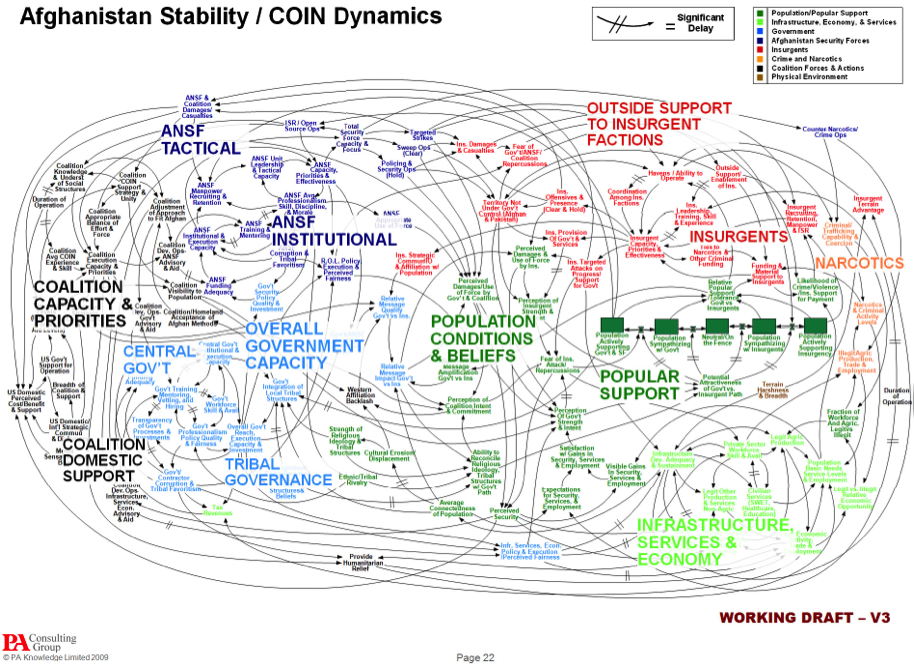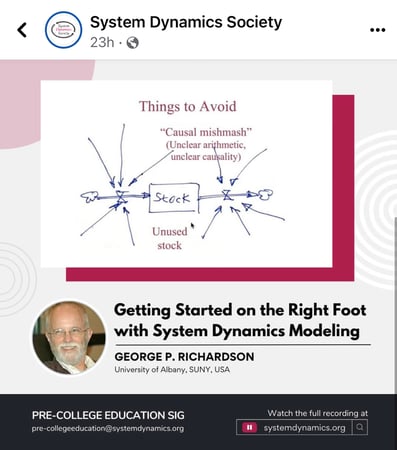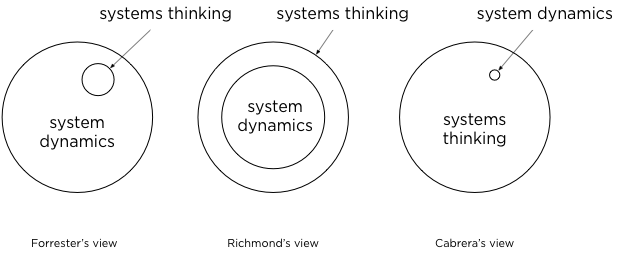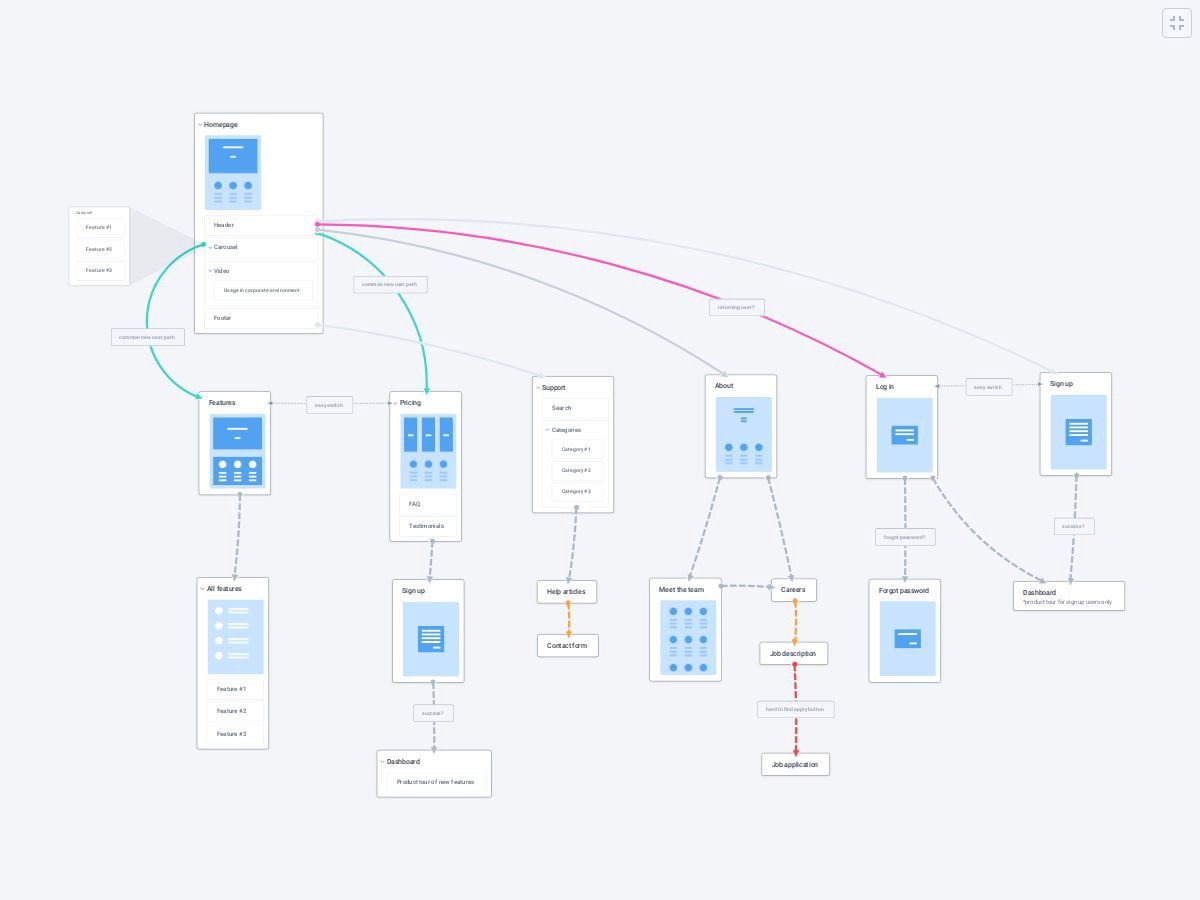Exploring the Pros and Cons of System Dynamics in Modern Systems Thinking

Senge’s work was almost entirely based on the work of another scholar named Jay Forrester at MIT under the name of “Industrial Dynamics” or later “System Dynamics.” Senge was a student of Forrester’s and his real claim to fame is not the ideas themselves but his ability to popularize them. So, when we talk about “Senge” we are really talking about System Dynamics (SD).
Many good things can be said about SD and in some circumstances with certain classes of systems that exhibit certain types of properties, SD is the go-to model (but these times would be the significant minority of the time). These systems tend to be what I call “quantities in feedback” situations—meaning systems in which the modeler is trying to understand how one quantity or population (what SD calls a "stock") of something can be mutually interdependent with another quantity/population of something. A quantity/population can be anything that accumulates or depletes, like hops and barley in an industrial beer production system, or wolves and elk in the Yellowstone ecosystem.
But the vast majority of systems are either (1) not best characterized in this way or (2) cannot be characterized meaningfully in this way due to the absence of construct validity to even define a population in a quantitative way. Thus, the model outputs are as good as its inputs, which are junk. In addition, even those systems that can be appropriately modeled by SD, there is always more to the system than the SD model acknowledges. For example, the perspective that is judging whether some quantity is measured over others or the interconnectedness being entirely binary (+ or -) when in fact it is multivalent.
Much of what Senge spoke about in The Fifth Discipline regarding SD, and importantly, the vast majority of the way SD is used today across the world is qualitative feedback diagrams. This is, as I explain below, not SD and not something Senge created, nor is it enough by a long shot to understand complex systems, nor to solve wicked problems or grand challenges.
Suffice to say that SD has been around for 70 years and awareness of Senge’s work for 40, so there has been ample time to see the “proof in the pudding” with new significant discoveries and growth. Yet, we have not seen the dramatic shift and universality that was promised. In contrast, modern complexity was born in the 80s and has made dramatic advancements in science, modeling, and even recently been the basis for a novel prize and has been adopted widely in the sciences.
Some will say that feedback and mental models are timeless--and they are--but that was not what SD was chiefly about and was not developed by Forrester nor Senge, but have been explored for a very long time. In addition, feedback is merely one type of relationship that occurs in systems (an important one) but there are many more important relationships that don’t work like SD describes as simplistic +\- feedback (for example, action-reaction Relationships are far more universal). Mental models (or "schema" in biology) also occurred long before Forrester and Senge and are not the mainstay of System Dynamics. In addition, we know a lot more today about mental models than we did in the 50s or 80s before modern cognitive and neuroscience existed.
But, most importantly, is that as seductive as SD models and thinking can be, they are often sorely lacking when attempting to understand complex socio-technical systems. They are, like I said, effective for some aspects of systems in some contexts, but the vast majority of the time they are not adequate and even misleading (in a to-a-hammer-every-problem-is-a-nail way). As just a few examples of where Senge and SD thinking falls short. They:
- do not account for many other types of relationships;
- fail to allocate attention to the construct validity of the distinctions being made;
- set the boundary-distinction at only the system level and do not see every identity/part of the system as having a boundary condition (that must be tested);
- fail to see the hierarchical or nested nature of systems (part-whole) and therefore generate overly complicated analyses that are “flat” and lack compression;
- fail to take multiple perspectives;
- More generally speaking:
- involves significant data requirements that are often not available, time consuming or costly;
- SD maps can be needlessly complicated (rather than complex) and therefore do not handle complex systems well;
- often have limited predictive power;
- often have limited focus and scope and are therefore most suited to closed systems.
- From a research perspective:
- to my knowledge, SD lacks any empirical research as to the observational existence of its material claims about systems (unlike DSRP Theory in contrast). In other words, its claims about systems are not validated by observational empirical or experimental results. (To be fair, one could say this about many of the "systems thinking" frameworks (CST, CSH, SSM, VSM, etc.). Would love to be proven wrong here. Do send me any empirical studies (not effect studies) I'm not aware of (not for lack of looking).)
- Suffers from Occum's Razor--a simpler theory (DSRP) can do everything SD can do and more
What SD does well is:
- identify feedback relationships (that unfortunately are mostly limited to quantities and distinguished as binary +/- and with the caveat that only a small subset of systems are best described in this way);
- create interconnected stocks (quantities/populations) with the caveat that only a small subset of systems are best described in this way;
- quantify the regulation of flows with the caveat that only a small subset of systems are best described in this way;
- develop in the user the idea that there are part-whole systems of relationships that work together to produce system level behavior (an almost universally important idea).
I do want to be clear, if you are managing a beer factory and worrying about running out of hops before barley and needing to shut down production (industrial dynamics) or want to quantitatively track the interdependencies between wolf and elk populations in Yellowstone, then SD is your go-to tool. But again, the vast majority of systems problems that people are dealing with do not adhere to these strengths of SD.
Just for fun, I saw this the other day... encouraging people to avoid a "causal mishmash" because it has "unclear arithmetic" and "unclear causality." Methinks all complex systems are characterized by unclear or mishmash causality because all of these systems exhibit "webs of causality."

.png?width=150&height=150&name=CRL%20GOAT%20Logo%20(4).png)


